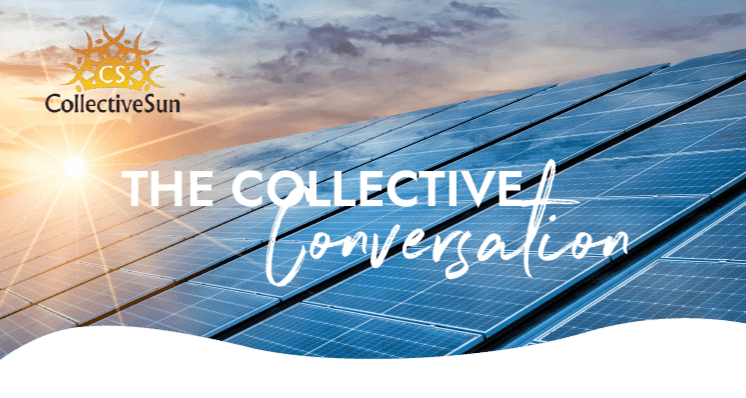
Managing Demand Charges to Lower Your Nonprofit’s Electricity Bills
| July 11
High electricity costs can eat into the budgets of nonprofits, displacing resources from their important missions. That’s only getting more challenging as electricity costs are rising around the U.S., at the same time as electric loads are increasing.
In addition to going up, electricity rates are getting more complicated. Utilities are not only charging for how much electricity you use in total; they may also charge based on when you use it or how much of it you use at any given point in time. Meanwhile, many buildings are moving from gas-powered appliances to electric ones, like heat pump heaters. Some are even adding electric vehicle charging. All of these factors are complicating energy costs for nonprofits.
Going solar is a great way to reduce electricity costs, and CollectiveSun has been helping nonprofits access solar savings for over a decade. But solar by itself can only go so far in lowering costs for commercial buildings. That’s because of demand charges.
What are demand charges?
Demand charges are extra charges added to a commercial building’s electric bill based on spikes in energy use. Instead of being based on your nonprofit’s overall energy consumption, demand charges are based on your single highest interval of energy use during the month — usually measured in 15-minute intervals. You could be using a relatively small amount of energy for most of the month, but just one 15-minute spike (like all of the air conditioning units kicking on simultaneously) can increase your electricity bill dramatically.
While demand charges and utility rate structures vary among states, in general, depending on your building’s energy use pattern, demand charges can account for 30% to even as much as 70% of your bill.

In this example, Building A and Building B have the same demand charges, even though Building A uses much more electricity overall. If Building A reached its current midday energy-use level for only 15 minutes, it would also incur these high demand charges. Source: Clean Energy Group.
The reason utilities charge extra for these demand spikes is that they have to keep enough power generation and transmission capacity online to support any peaks in demand without a grid failure. This excess capacity may sit idle most of the time, but it’s expensive and must be online and ready to provide power as soon as your building needs it. The utility’s mandate is to always have enough capacity in reserve to never run out even if everybody peaks at the same time.
Solar can help lower some of your energy use peaks, provided that you’re generating solar energy at the same time as you’re using the most energy. You also need to be generating the right amount of solar at those times; even in the middle of the day, clouds or bad weather could lower your generation just when you need it the most. One 15-minute spike would affect your power bill for the whole billing period.
Fortunately, there are straightforward ways to lower your demand charges, and they provide a big bang for the buck.
Using energy storage to manage demand charges
You can manage your demand charges by shaving your energy demand peaks. That means eliminating spikes in your demand to lower and smooth out the peaks, which reduces or eliminates demand charges.
An effective way to shave demand peaks is by adding batteries to store your energy. When your solar panels are generating more electricity than you need, you can store it to use during your demand spikes.
By lowering demand charges, peak shaving can lower your electricity bill significantly.

Peak shaving with battery storage. This example assumes a demand charge of $10 per kW (kilowatt) and a reduction in peak demand from 100 kW to 65 kW during a 24-hour period. Adding battery storage could reduce this building’s demand charges by $350 per billing period, or $4,200 annually. Source: Clean Energy Group.
Even with these savings, do batteries make sense economically? Ultimately, it depends on the demand charge rate, which varies widely by utility service territory. However, these demand charge rates have been facing an upward trend and it’s not usual to see them from $10-$50+ per kW.
Batteries are still expensive, but with prices coming down and battery technologies improving, they’re within reach for more customers all the time. Whether the cost of battery storage is less than the savings you’ll get from it depends on many factors, such as your specific electric load profile, how you’re financing your solar+storage, and opportunities for monetization in your utility service territory. Some utilities are paying customers to provide services that help manage and balance the grid, and more are likely to follow suit in the future. You can provide these grid services while still using the battery for your building’s needs. Stacking services in this way greatly improves battery economics.
In states with low credits for net energy metering (NEM) — the credit you get for sending the energy you generate back to the grid when you’re not using it — batteries can help nonprofits reduce electricity costs even more. California has just slashed its NEM credit by 70%, making the payback time for solar much longer without batteries. By adding battery storage, your nonprofit can store your excess solar production instead of sending it back to the grid, which makes your solar system much more cost-effective even under the new NEM structure.
With so many factors to consider, it’s key to size your solar and storage optimally to both reduce demand charges and ensure your system is cost-effective. Software platforms like Energy Toolbase, which we profiled last year, make it relatively simple for a solar developer to accurately determine the optimal system size for your project.
Matt Cimo, Developer Channel Manager at Energy Toolbase, explains the process for sizing a system: “First, we look at the customer’s current demand, including what was the highest demand for the year. Then, if they have solar, we look at how the solar influenced the maximum demand for the year, and for each billing cycle. How much power does the battery need to have so it can discharge enough to cover the highest residual demand for the year? What needs to be shaved? We also consider how long the battery needs to discharge for, based on the customer’s energy use pattern. If the battery is too small, you won’t discharge enough to make a meaningful dent, and if it’s too big, you’re paying too much for a system that you won’t fully utilize.”
Taking it to the next level with an energy management system
The secret sauce to get the most out of your solar+storage, or even to help lower demand charges when you have stand-alone solar without a battery, is adding an intelligent, automated energy management system (EMS).
While combining solar and energy storage can go far in managing your demand charges, a sophisticated EMS brings you added benefits. The best EMS’s use predictive monitoring and real-time automation to manage your building’s electric load for you with a great degree of precision, optimizing your energy use and maximizing your savings.
While sizing a battery correctly is a key first step, Cimo points out, “if you don’t tell it to do the right thing, then you’ll still miss out on a lot of savings. The way the battery discharges to take advantage of the most valuable opportunity of your rate tariff is also important. Changing your strategy can change the economics of your whole project.” An EMS like Energy Toolbase’s Acumen makes it easier to manage these complexities.
And it frees you from having to manage your building’s energy manually. An EMS can automatically shift some of your electricity use from times when you’d have a spike to times when you use less energy. While keeping your building comfortable, it automates peak shaving so you don’t have to manage it manually or with preset, fixed battery settings. The software can also shift energy use to less-expensive utility rate times to save you even more on your electricity bill.
A great example of how an EMS works is managing air conditioning for a building. The software considers weather predictions as well as your energy use patterns. So if it predicts an energy-use spike because hot weather is on the way later in the day, it can slowly pre-cool your building to avoid the spike while maintaining a comfortable temperature. In addition to using weather predictions, a tool like Energy Toolbase’s Acumen EMS learns your building’s energy use patterns and adjusts accordingly, using reactive and predictive AI.
An EMS can be highly cost-effective, with a relatively short payback period. Because an EMS adds extra energy management capabilities, it may also allow you to size your energy storage smaller, bringing your nonprofit further cost savings. When combined with solar or solar+storage, an EMS is a powerful tool that can help you take control of your nonprofit’s energy bills.
Making sense of demand charges
Your solar developer should be able to help you determine if batteries and an EMS make sense for your nonprofit. To get a realistic picture of what you can expect to spend and what your savings will be, it’s key to work with a reputable solar developer who understands tools like Energy Toolbase and who won’t exaggerate what you can expect from your system. When you go solar with CollectiveSun, you can rest assured that our developer partners are fully vetted and will pursue your best interests.
If you have questions about demand charges and how to manage them, don’t hesitate to reach out to CollectiveSun.






